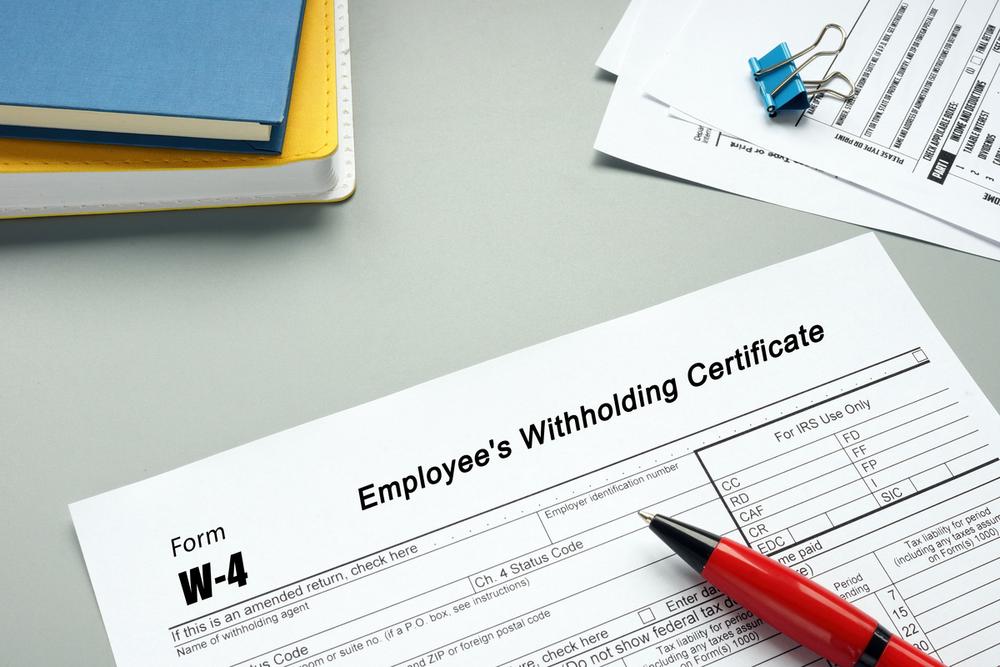Wondering how to calculate yearly income tax off pay stub when tax is not taken out?
The first step is to determine your federal income tax (FIT) obligation to the IRS. This process involves calculating your adjusted gross income (AGI) by subtracting certain nontaxable wages, fringe benefits, and contributions from your gross salary.
Once you’ve determined your AGI, you’ll need to account for taxes like FIT, FICA, Medicare Tax, FUTA, and unemployment tax, which will be automatically deducted from your AGI.
At Check Stub Maker, we’re experts in money matters and can help you learn how to calculate your earnings while staying consistently tax compliant.
In this comprehensive guide, we’ll walk you through the formula for calculating federal income tax as well as discuss the various types of federal income taxes you need to be aware of on your paystubs.
What this article covers:
- What Is the Formula for Calculating Federal Income Tax?
- Steps to Calculate Federal Income Tax
- Example of Calculating Federal Income Tax
- What Is Federal Income Tax (FIT) in Payroll?
- Types of Federal Income Tax
What Is the Formula for Calculating Federal Income Tax?
Based on our observations, the basic equation for determining your federal income tax is:
| Federal Income Tax = (Taxable Income × Tax Rate) – Tax Credits |
Let’s break this formula down further:
- Taxable Income: This is your total income minus deductions and exemptions.
- Tax Rate: Based on the specific bracket, the tax rate is the percentage applied to your taxable earnings to determine your tax liability.
- Tax Credits: These credits are dollar-for-dollar reductions in your tax liability, which can directly lower your tax bill.
Let’s say that your taxable salary is $50,000, your tax rate is within the 12% bracket, and you qualify for a $1,000 tax credit. As such, you would owe the IRS $5,000 in federal income taxes.
Here’s how to calculate your federal income taxes using the formula above:
| $50,000 (taxable income) × 12% (tax rate) = $6,000 (tax before credits)
$6,000 (current tax amount) – $1,000 (tax credit) = $5,000 (federal income tax) |
Understanding the formula for calculating federal income tax is crucial when learning how to calculate annual income based on year to date pay stub.
It’s important to note that your check stub may not always reflect the exact amount of federal income tax you owe, especially if taxes aren’t being withheld. This is usually the case if you’re self-employed or an independent contractor.
That’s why it’s essential to know how to perform these calculations yourself whenever necessary.

Steps to Calculate Federal Income Tax
Now that we know how to utilize its basic formula, let’s break down the process for calculating FIT into manageable steps.
1. Calculate Gross Pay
The first step in determining your federal income tax is to calculate your gross pay. This is the total amount you earn before any taxes or deductions are taken out of your paycheck.
When learning how to determine salary from pay stub, look for the “gross pay” or “gross earnings” section when you create pay stubs with us at Check Stub Maker.
If you’re paid hourly, simply multiply your hourly rate by the number of hours you’ve worked.
In this context, the formula for calculating gross income for hourly workers looks like this:
| Gross Income = Hourly Wage × Hours Worked per Week × Weeks Worked per Year |
For example, if you work 40 hours per week at an hourly rate of $20 per hour for 52 weeks a year, then your annual gross salary would be $41,600.
Keep in mind that this figure doesn’t include taxes or other deductions.
| 40 (number of hours worked per week) x 20 (hourly rate) x 52 (pay period)
= $41,600 (annual gross income) |
For salaried employees, divide your annual salary by the number of pay periods in a year.
This is what the formula for calculating annual gross income for salaried employees looks like:
| Gross Income = Annual Salary ÷ Number Of Pay Periods |
For instance, if your annual salary is $60,000 and you get paid on a bi-weekly basis, then your gross earnings would be $2,307.69.
| $60,000 (annual earnings) ÷ 26 (number of bi-weekly pay periods)
= $2,307.69 (bi-weekly gross income) |

2. Calculate Employee Tax Withholdings
Even if taxes aren’t being taken out of your paycheck, it’s critical to understand what should be withheld.
These withholdings typically include:
- Federal Income Tax
- Social Security Tax
- Medicare Tax
To calculate these amounts, you’ll need to refer to the 2024 tax brackets and rates provided by the IRS.
Remember, these rates can change annually, so always use the most up-to-date information.
3. Take Care Of Deductions
Next, you’ll need to account for any voluntary deductions, which can include:
- health insurance premiums
- retirement contributions such as a 401(k) or an IRA
- Flexible Spending Account (FSA) contributions
- Health Savings Account (HSA) contributions
Our findings at Check Stub Maker show that these deductions can significantly impact your taxable wages, so it’s essential to account for them accurately.
When you make paystubs with us, you can make these calculations automatically and precisely in a matter of minutes.
4. Add On Any Expense Reimbursements
If your employer reimburses you for any work-related expenses (e.g. travel, meals, mileage etc.), these should be added back to your gross pay.
This is because employer reimbursements for business-related expenses aren’t generally added to your gross pay or taxed. This applies when they adhere to guidelines for the IRS’s “Accountable Plan” and aren’t considered excessive for fringe benefits.
For example, if you spend $500 on a work trip and are reimbursed by your employer, then that expense isn’t taxable.

5. Total It All Up
Finally, subtract your deductions and withholdings from your gross pay to determine your net pay. This is the amount you’re paid after taxes, which is also referred to as your ‘take-home pay’.
When learning how to calculate federal taxable wages on pay stub, remember that the net pay is your gross pay minus after tax deductions.
Example of Calculating Federal Income Tax
At Check Stub Maker, we’ll give you an example of calculating federal income tax when it’s not taken out of your paycheck.
Here’s the scenario:
- your annual salary is $50,000
- your tax filing status is ‘Single’
- the standard federal income tax deduction for 2024 is roughly $13,850
Here’s the formula for calculating FIT based on the above information:
| Taxable Income = Annual Salary – Standard Deduction |
First, you’ll need to calculate the taxable income.
| $50,000 (annual salary) – $13,850 (standard single filer FIT deduction) = $36,150 (taxable income) |
Next, you’ll have to look up the relevant income tax rates and brackets on the IRS’ website. From there, you’ll calculate the tax for 2024 as a single filer.
Based on the details above, your $36,150 in taxable earnings will fall into the 12% tax bracket.
According to this particular tax bracket, you’ll essentially pay federal income tax to the IRS for 12% of $11,600 to $47,150 you earn in taxable wages as a single filer, since the standard FIT deduction was $13,850 in the above scenario.

Now, it’s time to calculate your FIT amount.
This involves deducting 10% of the minimum taxable wage base for single filers earning within the 12% tax rate bracket, which is $11,600.
| $11,600 (minimum taxable wage) x 0.1 (first FIT tax rate) = $1,160 (first FIT payment) |
You will pay this amount during the first period of the tax season.
To arrive at the total amount of federal income tax you’ll pay in the second period of the tax season, you need to subtract the minimum taxable salary for single filers earning within the 12% tax rate bracket from the actual taxable income.
Finally, you’ll multiply that figure by 12%.
| $36,150 (taxable income) – $11,600 (minimum taxable wage) = $24,550
$24,550 × 0.12 (FIT rate for single filers) = $2,946 (second FIT payment) |
Finally, you’ll add up these various deductions to reach the total federal income tax you owe for the entire year, which will be $4,106.
| $1,160 + $2,946 = $4,106 (annual federal income tax) |
After putting it to the test, we at Check Stub Maker have found that this method gives you an accurate estimate of your federal income tax liability during the course of tax season.
What Is Federal Income Tax (FIT) in Payroll?
Federal Income Tax (FIT) is a tax levied by the United States government on an individual’s or corporation’s earnings.
In the context of payroll, FIT refers to the amount of tax withheld from an employee’s wages to pay their income tax liability.

Through our practical knowledge, we’ve learned that FIT is calculated based on:
- the employee’s filing status (single, married filing jointly, etc.)
- the number of allowances claimed on Form W-4
- the employee’s gross wages for the pay period
- the frequency of pay periods (hourly, weekly, bi-weekly, monthly, etc.)
When taxes aren’t being taken out of your paycheck or check stubs, it’s vital to know how to calculate and set aside the appropriate amount for FIT to avoid owing a large sum to the IRS when tax time comes around.
Types of Federal Income Tax
As per our expertise at Check Stub Maker, there are several types of federal taxes that may apply to your salary.
Social Security Tax (FICA)
Social Security tax, also known as the Federal Insurance Contributions Act (FICA), is a payroll tax that funds the Social Security program.
As of 2024, the Social Security tax rate is 6.2% for both the employer and the employee, up to a wage base limit of $168,600.
State Unemployment Tax
While not a federal tax, state unemployment tax is worth mentioning as it’s often confused with federal taxes.
This tax funds unemployment benefits and is typically paid by employers, not employees. However, in some states such as Alaska, New Jersey, and Pennsylvania, employees may also be required to contribute to state unemployment taxes.
Federal Unemployment Tax Act (FUTA)
The Federal Unemployment Tax Act (FUTA) is another payroll tax, but it’s paid only by employers, not employees.
It funds unemployment benefits administered by each state. The current FUTA tax rate is 6% on the first $7,000 of wages paid to each employee annually.

Additional Medicare Tax
Drawing from our experience at Check Stub Maker, we’ve found that there’s an Additional Medicare Tax. This applies to high-income earners, which is in addition to the regular 1.45% Medicare tax.
Essentially, it deducts 0.9% on wages exceeding $200,000 for single filers or $250,000 for married couples filing jointly.
When learning how to find medicare wages on paystub, you’ll usually see the Additional Medicare Tax listed as “Medicare” or “Social Security” in the deductions section.
Conclusion
In this article, we discovered that calculating yearly income tax off a pay stub when tax is not taken out involves several steps, from understanding the basic tax formula to accounting for various types of federal taxes.
We know that managing your taxes can be a nuanced affair. That’s why we offer a user-friendly pay stub generator to help you keep track of your earnings and tax obligations.
Whether you’re an employee trying to better comprehend your tax liability, an entrepreneur, or a small to medium-sized business owner managing your payroll system, our tool can simplify the process in minutes.
So, what are you waiting for? Visit us at Check Stub Maker now to see how we can help you stay on top of your finances and taxes!
If you want to learn more, why not check out these articles below:
- Is It Better to Give Tax Return or Paystub for Income Verification for Student Loans
- How to Calculate Tax for Missing W2 with No Paycheck Stub
- What Does PTO Stand for on a Pay Stub?
- What K Stands for in Pay Stubs
- What Does SERS Stand for on a Pay Stub?
- What Does TRS Stand for on Paystub?
- How Do I Get My Check Stubs If My Paycheck Is Deposited Automatically?
- How to Get a Paycheck Stub If You Work Under the Table
- How Do I Get a Paycheck Stub If I Have a Pay Card?
- How to Get Paystubs From a Job If You Get Paper Checks
- How to Find Out How Many Hours I Have on Pay Stub
- How to Find Employer Identification Number on Pay Stub
- Do Checks Count as Pay Stubs?
- Is a Pay Stub a Check?
- Check Stubs Meaning




